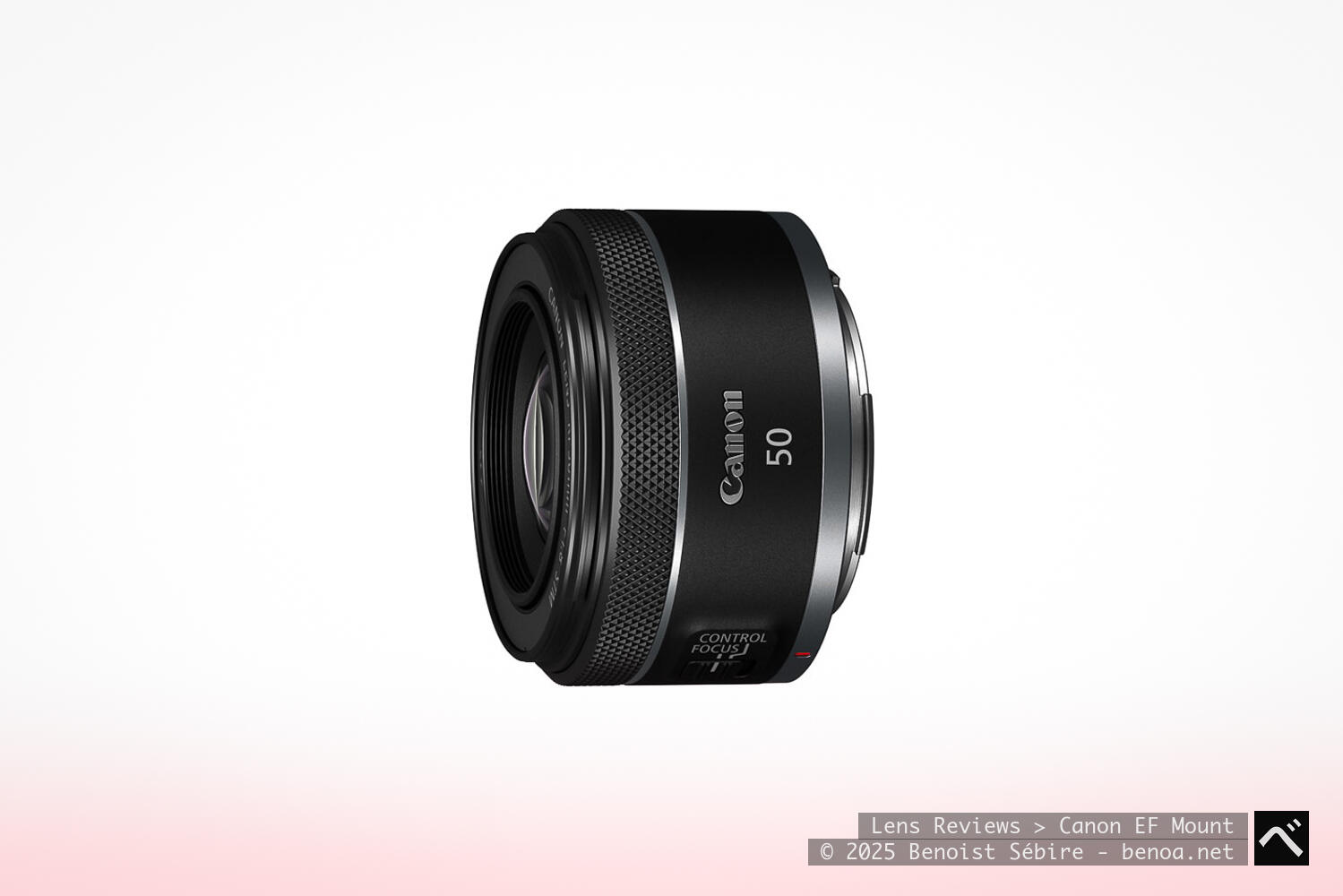Canon RF 50mm F1.8 Review

Released in 2020, the Canon RF 50mm f/1.8 STM is a compact and affordable prime lens for Canon’s RF-mount mirrorless cameras. Often referred to as the “nifty fifty,” this lens provides a versatile full-frame 50mm focal length, making it ideal for portraits, street photography, and everyday shooting. With a fast f/1.8 aperture, it offers strong low-light performance and shallow depth of field for subject isolation. As one of the most budget-friendly RF lenses, it is an excellent choice for beginners and enthusiasts looking for a lightweight prime.
Build and Design
The RF 50mm f/1.8 STM follows a compact and minimalist design, weighing only 160g. The exterior is primarily plastic, but it features a metal lens mount for added durability. Its small size makes it a great match for Canon’s full-frame RF cameras as well as APS-C models like the EOS R7 and R10, where it provides an 80mm equivalent focal length.
The lens includes a combined focus and control ring, which can be programmed for settings like ISO, aperture, or exposure compensation. Unlike higher-end RF lenses, it lacks weather sealing, meaning extra care is required in harsh conditions. The front accepts 43mm filters, a slightly less common size than the 49mm or 52mm typically seen on similar lenses.
Optical Performance
For its price, the RF 50mm f/1.8 STM delivers impressive image quality. It is sharp in the center wide open at f/1.8, with slightly softer edges that improve when stopped down to f/2.8 or f/4.
The fast aperture allows for a shallow depth of field, creating a pleasant background blur that works well for portraits. However, the bokeh can sometimes appear slightly busy compared to more expensive 50mm lenses, such as the RF 50mm f/1.2L.
Chromatic aberrations and fringing can be noticeable in high-contrast areas, especially at f/1.8, but they are generally well-controlled and can be corrected in post-processing. Some vignetting is present at wider apertures, but in-camera corrections or stopping down can reduce its impact.
Autofocus Performance
The stepping motor (STM) provides fast and quiet autofocus, making it a solid choice for both photography and video. Autofocus is generally accurate in good lighting conditions, though it may hunt slightly in low light compared to Canon’s higher-end RF lenses with Nano USM motors.
For video shooters, autofocus remains smooth and silent, and focus breathing is minimal. However, since the lens lacks image stabilisation, handheld video work benefits from pairing it with an IBIS-equipped body like the EOS R6 or R5.
Handling and Versatility
With its lightweight design and classic 50mm focal length, the RF 50mm f/1.8 STM is a highly versatile lens. It is well-suited for portraits, environmental shots, low-light photography, and even product photography thanks to its close minimum focusing distance of 30cm.
For APS-C users, the 80mm equivalent field of view makes it an excellent budget-friendly portrait lens. The compact form factor also makes it a great everyday carry lens for photographers who prefer a discreet setup.
Conclusion
The Canon RF 50mm f/1.8 STM is an excellent budget-friendly prime lens that delivers great image quality in a compact and lightweight package. Its fast f/1.8 aperture provides good low-light performance and background blur, making it an ideal choice for portraits, street photography, and everyday use.
While it does not have the refined bokeh or optical perfection of Canon’s more expensive RF primes, it offers incredible value for money. For photographers looking to expand their RF lens collection without spending a fortune, this lens is a must-have addition.
Strengths
- Excellent value for money
- Sharp in the center even wide open
- Compact and lightweight
- Pleasing color and contrast
- Quiet and accurate autofocus
- Close focusing for creative flexibility
Weaknesses
- No weather sealing
- Soft corners wide open
- Some longitudinal chromatic aberration at f/1.8
- Flare resistance could be better
- Bokeh less refined than premium primes
Samples
Here are the latest photos I captured through my Canon RF 50mm f/1.8 STM lens. These sample shots highlight the lens’s performance across different conditions, settings, and subjects. To view the complete collection of photos taken with this lens, follow the link.






